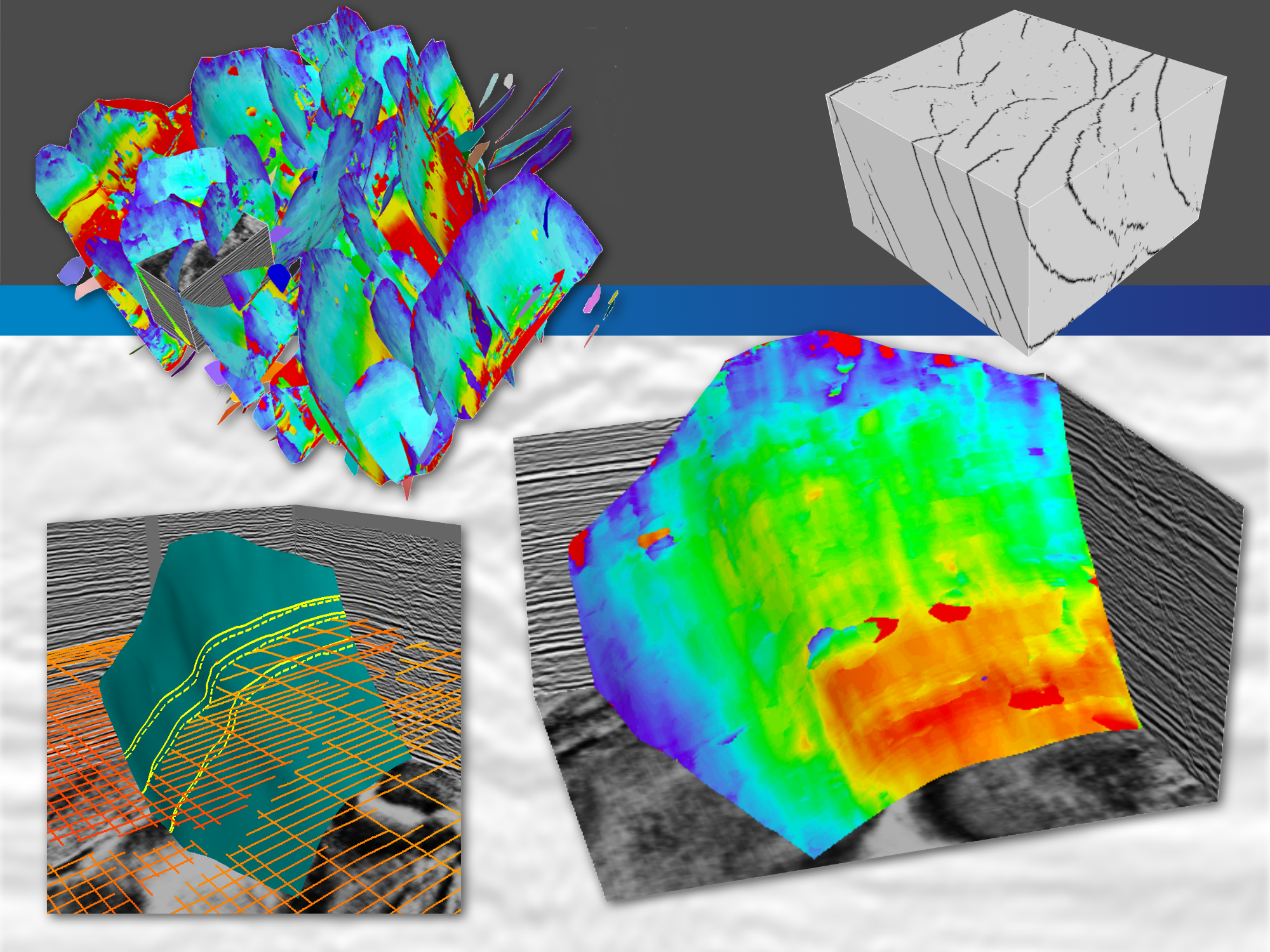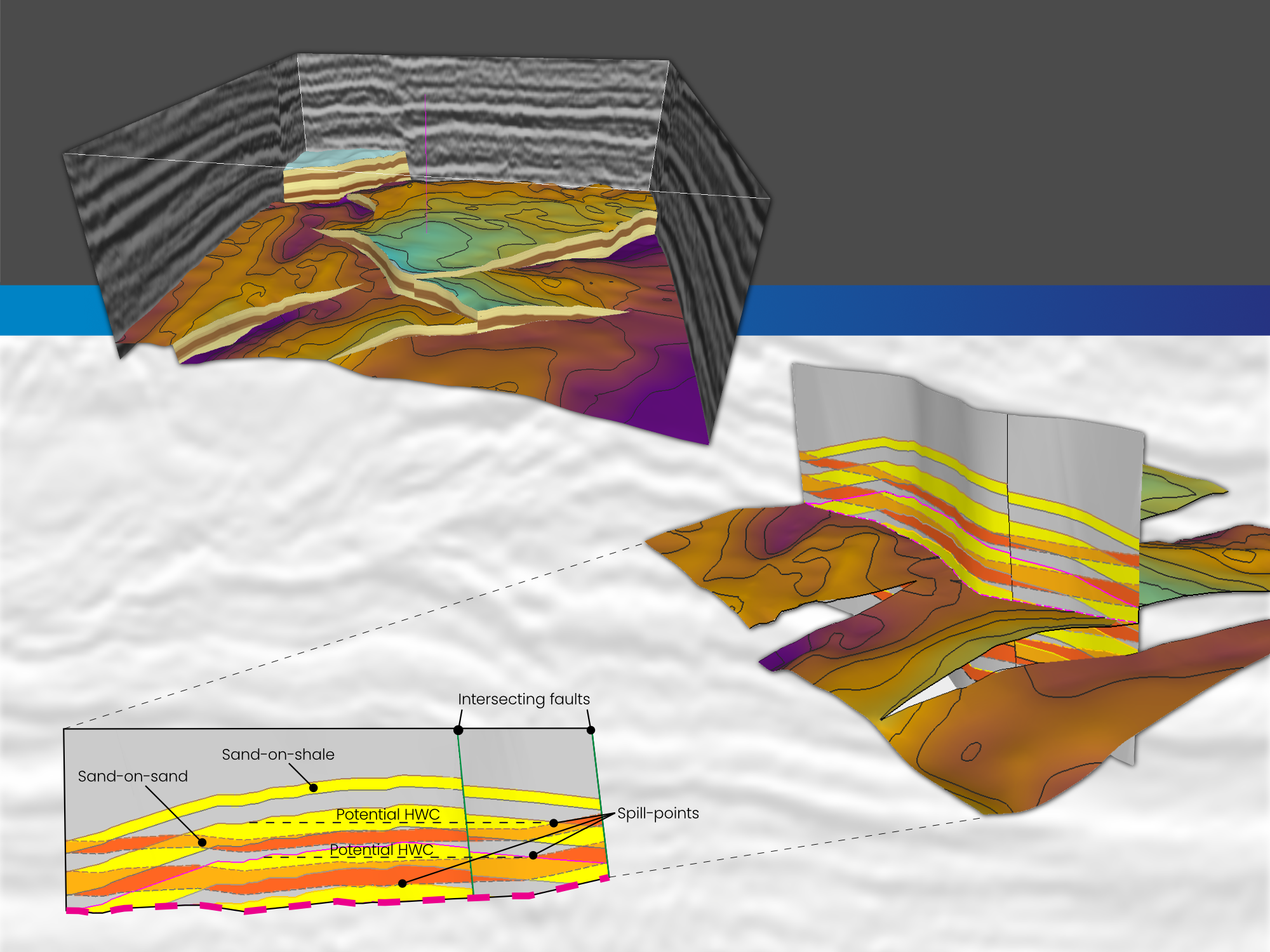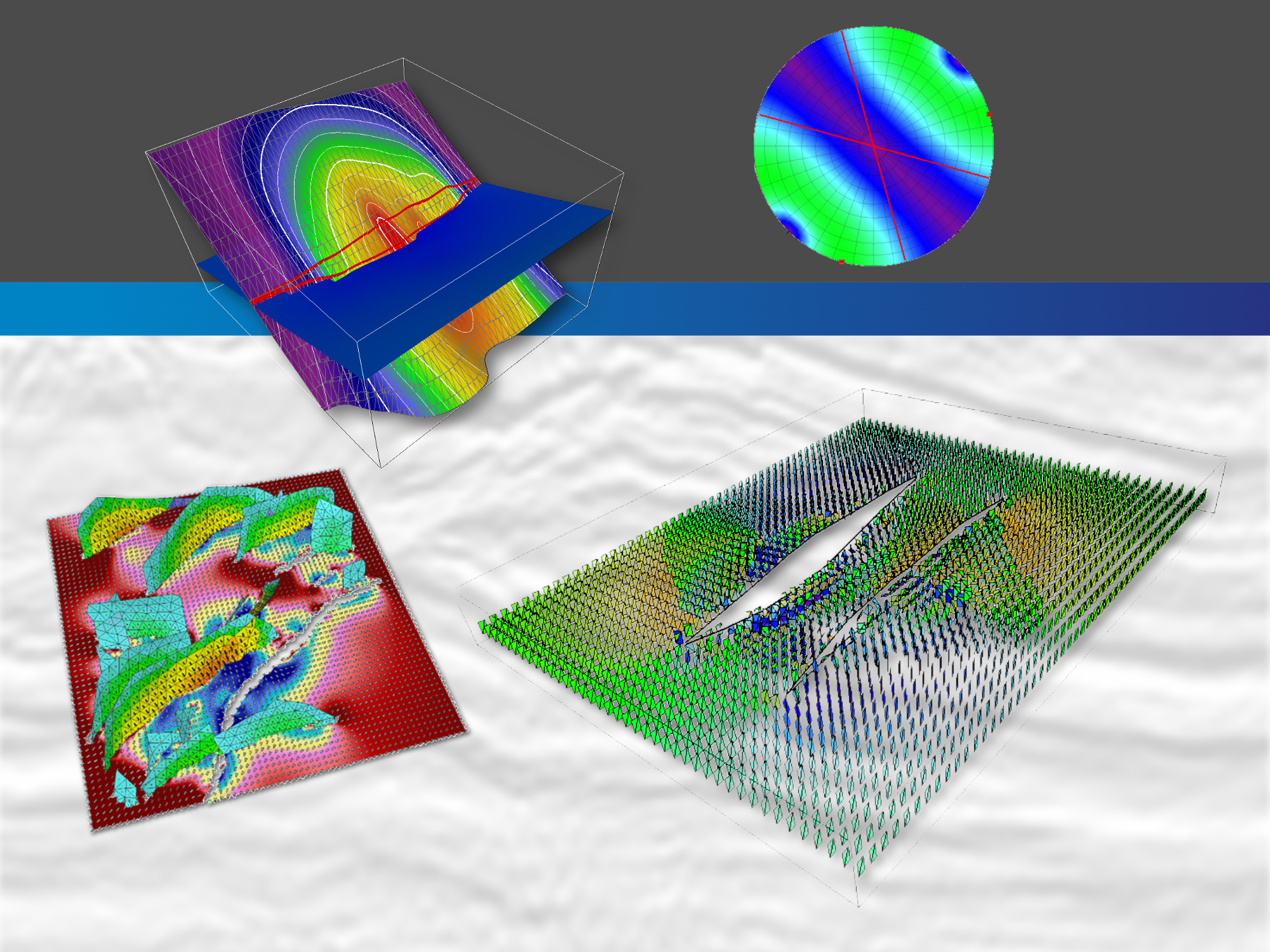Precision Software & Services for the Energy Industry
Consulting Services
Badleys has been at the forefront of technical innovation and most notably have led the industry in the commercial application of structural geological techniques, fault-seal analysis and geomechanics. Our consultancy team, all Ph.Ds with extensive experience in applying their skills to oil industry problems, has close ties with researchers at Liverpool, Cambridge and University College Dublin.
Much of our consultancy work involves use of our in-house-developed software applications and so a major strength of the team comes from its close interaction with our software developers.
Our expertise covers, but is not limited to the following areas:
Seismic Interpretation & Structural Geology
Structural Geology:
Our speciality as a company is the application of structural geology to exploration and production problems. We have many man-years of experience in this field and are second to none in the independent consultancy market. We invite you to look at our extensive peer-reviewed publication record for an overview of the breadth of our experience. From reservoir to basin scale we have been engaged by companies across the industry to provide our expertise.Seismic Interpretation:
We have many man-years of experience interpreting 2D and 3D seismic data. Over the years our clients have frequently called upon our expertise in seismic interpretation and structural geology to interpret structurally-complex data sets for which they do not have the in-house expertise. Our experience as seismic interpreters means that not only can we prepare data to our clients' specification, we can also prepare data for input to our in-house developed software for further structural analysis.Interpretation QC and Fault Analysis:
Interpreting faults has always been a challenge even with the advent of new geophysical attributes and displays (e.g. coherency cubes, volume picking). This is even more so today when interpretations are made in a 3D world where fault are captured as surfaces not just polygons on maps or lines on sections. Fault interpretation is often seriously hindered by data quality. In turn, fault correlation and fault relationships can be ambiguous and fault-surface extent uncertain. These difficulties are often needlessly worsened by untidy interpretation and inappropriate use of auto-tracking & AI tools.Fault Interpretation Issues:
The accuracy of mapping in faulted areas is critical for the correct definition of fields and prospects. Assessment of the 3-dimensional geometry of the fault network, and visualization of the displacement variation on fault surfaces, are important methods for evaluating sub-surface interpretations. Using our TrapTester T7 system we have pioneered new methods for detailed fault analysis, using concepts researched and developed by our colleagues in the Fault Analysis Group at University College Dublin.3D Framework Model Building:
Constructing robust geological model for a prospect are key to accurately assessing prospectivity. Badleys excel at modelling the intersection of fault and horizon surfaces to produce a gap-less 3D structural frameworks and producing accurate and consistent fault-fault intersections.3D Stratigraphic infill Modelling:
Based on the robust 3D structural framework and stratigraphic rules derived from well data, Badleys and T7 produce models where the reservoir-scale layers are accurately represented along the fault surfaces. This allows for the most accurate mapping of potential structural risk within a prospect.
Generating structurally consistent models is usually the first step when undertaking any consultancy project. Badleys have expertise in all of the following areas (hover over the links below to find out more):
Structural Geology
Seismic Interpretation
Interpretation QC and Fault Analysis
Fault Interpretation Issues
3D Framework Model Building
3D Stratigraphic Infill Modelling
Fault-Seal & Trap Analysis

Finding and mapping traps and risking fault seals is an everyday task in the oil industry. About 75% of all hydrocarbon-bearing traps are fault-related. Traps are found and mapped mainly using seismic data and/or well data. Seals cannot be seen directly in seismic data and a prediction of their occurrence and quality requires lithological knowledge for which well data is usually necessary.
Predicting the sealing potential of faults requires structural and lithological information. The term 'fault seal' is also often used in a production context, to describe the effect of fault zones in impairing across-fault fluid flow. These dynamic seals might not be capable of retaining hydrocarbons over a geological timescale, but their relatively low permeability may dramatically impact on production rates and strategies.
Badleys use the below key concepts to undertake fault seal and trap analysis:
Fault-Plane Mapping
Fault-Zone Composition
Hydrocarbon Column Height
Fault Reactivation
Fault Properties for Reservoir Models
Fracture Prediction & Geomechanics
Fault Statistics:
Derive statistical information on the faults from seismic interpretation, structure maps, image logs and core data. Integrate core and image log datasets with seismic interpretation to help constrain complex fault geometries.Fault Properties:
Characterize the capillary and permeability properties of fracture-zone material (such as cataclastic gouge or clay smear) for local calibration points for fault seal analysis.Fault and Fracture Prediction:
Apply elastic dislocation (ED) theory to predict fracture density, strains, orientations and failure modes associated with the mapped structural interpretation.Sensitivity Analysis of Fault Property Effects:
T7 and TransGen are used to calculated a series of geocellular models based on a range of realizations of the relationship between Shale Gouge Ratio and fault-zone permeability.QC Faulted Cellular Models:
Predicting the effects of faults on production depends on modelling the correct cell juxtapositions across faults in geocellular models. Comparison of cellular model-derived juxtapositions (visualized using TransGen) with those predicted by TrapTester T7 is an efficient and effect way to quality check the cellular model. This approach also allows comparison and adjustment of TransGen predicted cellular Shale Gouge Ratios with those of T7.
It is now common practice to incorporate small scale faults and fractures into cellular reservoir models and reservoir simulations in order to assess their impact on fluid flow. Much of this input 'data' results from stochastic models and their discrete fracture networks (DFN) realizations are based on a minimal number of reliable sample points.
Vital information about these small scale faults can be extracted from standard seismic interpretations using fractal techniques and used in reservoir studies and well planning. Together with our research partners, the Fault Analysis Group, University of Dublin, we have been at the forefront of the research and commercial application of methods that make predictions about faults too small to be resolved by seismic data.
Basin Modelling
Understanding Basin Dynamics:
Understand and predict the large-scale processes driving subsidence, uplift and heat-flow in a basin.Palinspastic Restoration:
Produce sequential, isostatically-balanced cross-sections (2D) or maps (3D) depicting stratigraphic, fault-block and basin geometries.Palaeobathymetry:
Predict and map out variations in bathymetry, basin-floor slope and depocentre location through time.Depositional & Erosional Analysis:
Model syn-rift structural elevation (footwall uplift) highlighting sediment source areas and predict amounts of erosion at fault-block crests. Quantify the effects of sediment loading and compaction on stratigraphy. Generate burial history plots across a basin.Temperature & Maturation History:
Evaluate a basin's temperature history from beta-factor and heat-flow profiles generated by both forward and reverse modelling. Predict top basement and top sediment heat-flow and horizon temperatures through time. Calibrate vitrinite and down-hole temperature against a tectonic/thermal model.Gravity Modelling:
Compare structurally-derived predictions with measured gravity models.Crustal Thickness Modelling:
Predict crustal thickness and associated beta-factors from 3d gravity, bathymetry and sediment thickness data.
Badleys have collaborated with the Earth Structure & Geodynamics Group at Liverpool University since the late 1980's, developing techniques and software for the large-scale analysis of rift basins and passive margins which are used mainly as an exploration tool.
The list below shows some of the topics cover by our basin modelling consultancy team
Understanding Basin Dynamics
Palinspastic Restoration
Palaeobathymetry
Depositional & Erosional Analysis
Temperature & Maturation History
Gravity Modelling
Crustal Thickness Modelling
Interested in learning more?
Consulting work can be carried out either in our office (UK) or on-site depending upon project duration. Long duration projects, lasting several weeks or more, are typically undertaken in our office. Project documentation is usually on a daily or weekly basis with access to the reports via a client specific (and secure) part of the Badleys web site. Transfer of data for the project work can be made through our secure ftp site.
For further details about our consulting services, or general enquires please contact our consultancy team using the link below.